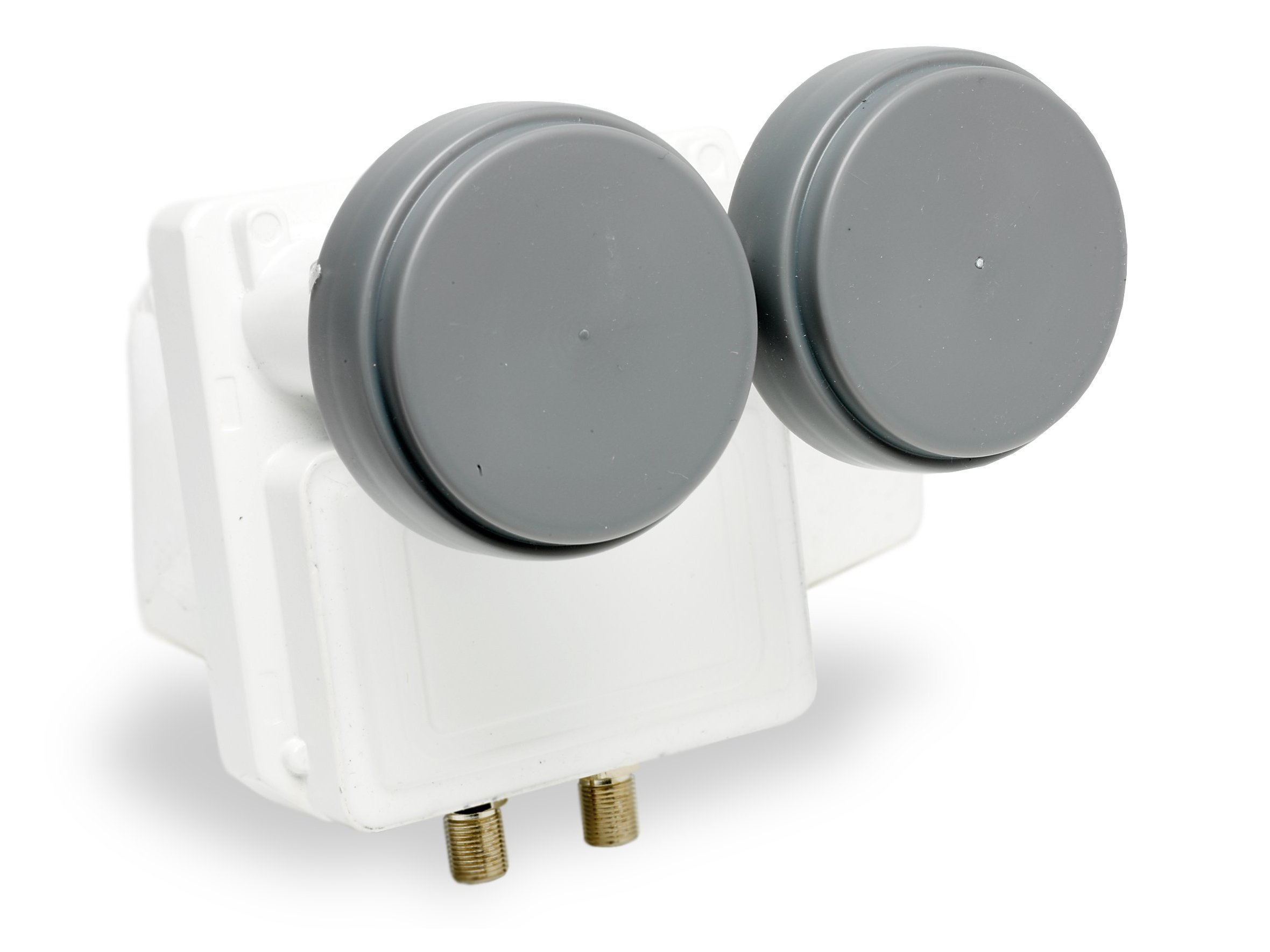TechRadar Verdict
Cheaper than most equivalents, easy to use and to align, and with a fantastic noise figure. Goodbye, separate switch
Pros
- +
All-in-one simplicity
- +
Cheaper for multi-output systems
Cons
- -
No skew adjustment possible
Why you can trust TechRadar
Although popular in other countries, monoblock LNBs haven't been adopted with such enthusiasm in the UK. A monoblock LNB provides two feedhorns, two LNBs and a DiSEqC switch all in one package for receiving signals from two satellite positions at once on one dish.
The two feedhorns are fixed at the right spacing for reception of the two satellites (usually Astra 1 at 19°E and Hot Bird at 13°E) on a standard offset dish using the principle of multiple focal points from a normal satellite dish.
A new range of monoblocks from German manufacturer Lemon may well change UK perceptions of monoblock LNBs. The LEM-40MONO is the basic model. It is compact and follows the trend of hiding all the metal casing of the LNB inside an outer plastic case that looks prettier (and a waterproofing cable boot is supplied).
Foremost in its specifications is a (frankly) incredible 0.2dB noise figure. Quite how this is measured and exactly what it represents is unclear, but what is certain is that this monoblock is startlingly low-noise.
It's designed for reception of satellites 6° apart - specifically Astra 1 and Hot Bird. The size, shape and spacing of the feedhorns also assumes a 'standard' offset dish with a focal-length-to-diameter (f/D) ratio between 0.6 and 0.7 (which includes most 60cm, 80cm and 1m offset dishes available in the UK).
There is nothing on the monoblock to indicate which feedhorn is number one. However, because Eutelsat invented DiSEqC, it's normal that the Hot Bird feedhorn (the left-hand one looking into the feedhorns) is the default - and so it is with this model.
The monoblock was tested on an 80cm offset dish. The dish was aligned on Hot Bird with the primary feedhorn clamped at the focus. You can just as easily clamp the other feedhorn at the focus and align on Astra 1 (and you may want to in the north of the country) but only if you have a meter that can achieve the necessary DiSEqC switching.
Sign up for breaking news, reviews, opinion, top tech deals, and more.
In theory, the angle of the monoblock in the clamp should be adjusted to achieve the correct elevation difference between Astra 1 and Hot Bird, decreasing as you go farther north. However, this twisting would also affect the skew adjustment on both halves of the monoblock (and vice versa).
In practice, the secondary focuses of most dishes are quite spread out, and with the relatively wide beamwidth of these dishes and the low noise figure of the LNBs, there's no need for adjustment.
And it works. With the primary feedhorn aligned on Hot Bird, and the monoblock roughly level, the secondary feedhorn was then found to be receiving Astra 1 with a good signal strength. It makes dual-feed setup as easy as a single LNB - and the cost is almost the same too.
LEMP- 231TWMONO
The second monoblock tested is the LEMP- 231TWMONO. This is functionally very similar but for its 23mm feedhorn necks (an adapter is supplied for the 40mm LNB clamps found on most dishes), exposed metal casing (there's no cable boot), and the two F-connectors.
It's not clear why the build is different, and the LEMP- 231TWMONO certainly doesn't look as nice, but that's no real problem, nor a reason to reject this monoblock. This model has two F-connectors - it is a twin monoblock, providing access to both satellites (selected by DiSEqC switching, as before) independently to two receivers.
That's good for a multi-room setup, or use with a twintuner PVR setup - both tuners then have access to both satellites, giving transparent watch-and-record across all the channels. Although the twin monoblock costs a bit more, it is a bargain compared with the alternative of two twin LNBs and a DiSEqC switch (you can pay this much for just a twin LNB).
The super-low noise figure is the same for the twin and it is largely identical in all other aspects of setup, use and performance.
For those with more receivers (or even two twin-tuner PVRs), Lemon also produces a quad version - four outputs each providing independent access to Astra 1 and Hot Bird - very similar to the twin, although this was not tested.
It's not clear why monoblocks are unloved in the UK. But with the likes of these Lemon models available they should be on shopping lists everywhere. These models are cheaper than most equivalents, easy to use and to align, and with a fantastic noise figure. Goodbye, separate switch! Geoff Bains
Tech.co.uk was the former name of TechRadar.com. Its staff were at the forefront of the digital publishing revolution, and spearheaded the move to bring consumer technology journalism to its natural home – online. Many of the current TechRadar staff started life a Tech.co.uk staff writer, covering everything from the emerging smartphone market to the evolving market of personal computers. Think of it as the building blocks of the TechRadar you love today.
